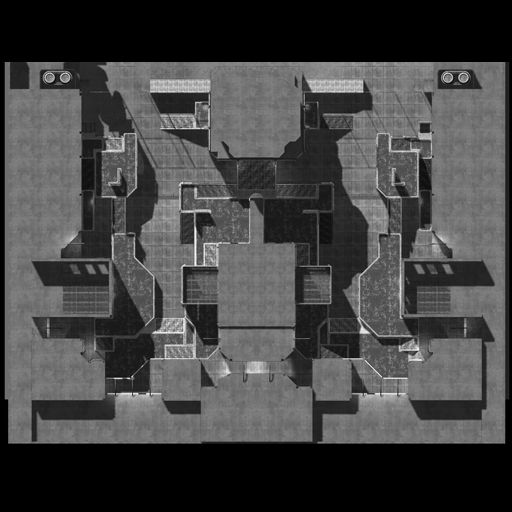
Asymmetric Levels
Introduction:
Last week I talked about symmetric level design so this week I decided to look at the other side of the coin. Asymmetric levels offer unique design challenges, the biggest pit fall is having one side of the map be more desirable then the other. This can be a big issue in a team based game type, if one team spawns on a side with better weapons or power-ups the balancing will be off and one team will have a much easier time winning. If an asymmetric level is balanced well it can be a very interesting experience for the player, since each side of the map is different the players must come up with different strategies depending on where they spawn.
Asymmetric Maps:

Escalation – Gears of War 1
The map Escalation from Gears of War is an excellent example of fantastic asymmetric level design. The map takes place on a large stair case one team spawns at the bottom and has to work their way up the stairs, the other team spawns at the top of the stairs and works their way down. This map may seem unbalanced but Epic Games used weapon spawns and the geometry of the level to keep things balanced. The team that starts at the top (the Estate Spawn in the picture above) has the advantage of being able to see the surrounding area better as well as superior firing positions. Since Gears of War is about taking cover during combat the players at the top of the map have positions that allow them to shoot down at the other team allowing them to get around the attacking teams cover. Their elevated position also makes it hard for the team coming up the stairs to hit the opposing team. The team that is advancing up the stairs (the team that starts at the Allfather Spawn) is given two sniper rifles to help even the odds. The team moving up the stairs has almost all the weapons spawn close to them, this helps them fight against an enemy with a superior position. The sparsity of weapons is very intentional, besides the sniper rifles there are only three other weapon pick-ups two of which are pistols and the last is some grenades. This makes the sniper rifles very powerful on this map since there aren’t any weapons to counter the snipers. Gears of War’s multiplayer works on a round system, when everyone on a team is killed the round ends and the teams trade spawns. This makes it so both teams have opportunities to take advantage of the high ground and the snipers respectively.
Conclusion:
Asymmetric maps can live and die based on the balancing, its very compelling as a player to have two different sides that require different strategies to attack and defend. The biggest challenge that one must overcome when designing a asymmetric level is making sure one side is not more overpowered then the other, if one side is clearly at an advantage nobody is going to want to start on that side which can lead to players quitting early.






